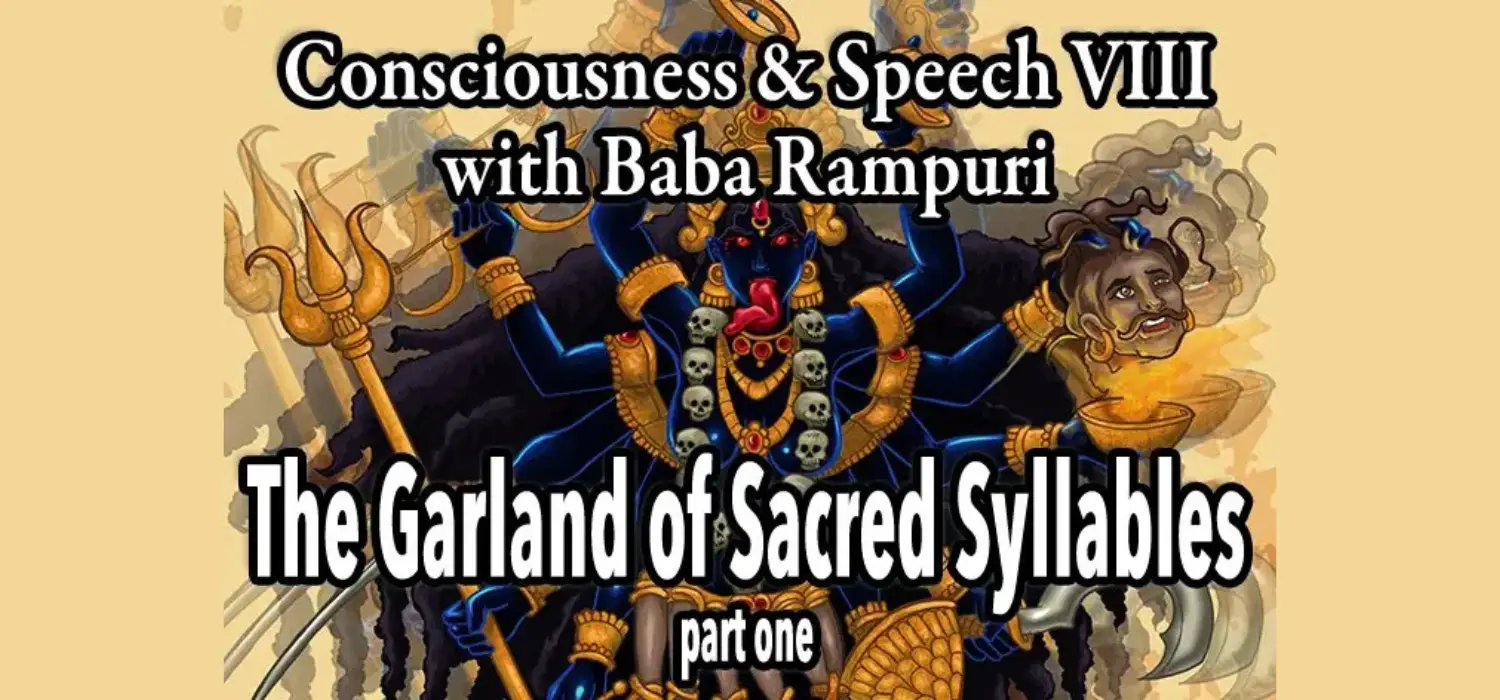
Garland of Sacred Syllables, VIII, part five
Sacred Speech Masterclass episode VIII
part 5 of 6 parts
hosted by Baba Rampuri
![]()
The Garland of Skulls
Operation. And it’s not prescriptive, but descriptive. And this is basically, what I would, how I would also, call the Indian grammarians, as descriptive rather than prescriptive.
![]()

![]()
Babaji: I am going to go back once more to our varnamala, and I would like you to follow me, with the consonants, and go through, around, of the consonants not with the focus on trying to mimic or imitate a sound that I am making or the sound that you imagine should be make for a syllable, but by going to these places, in your vocal apparatus and performing the operations. So we will start off among the consonants, at the ka varga, and we start out with the simple striking at the bottom of the throat, the simple ka. And when we add aspiration to that, when we add breath to that, that simple ka comes out kha.
Peter: Can I come in again with a comment?
Babaji: Please.
Peter: You know this goes back when you said, “Dharma.” Dharma is not religion, and you said maybe science, but science has other attributes. Then I thought you know, you could call dharma: it’s a program. It’s a program of creation. And it’s not something that has prescribed results, because a program you apply to everything, every (?) new kinds of questions, but there’s not fixed results, like in religion you have the result that if you kill your neighbor, you go to hell and stuff like that, you know. So dharma isn’t telling you that. It’s like an instruction manual or a program, even better, for creations. I just wanted to add that. This kind of thought.
Babaji: In fact maybe what we could even say that it is not moral based, but strategic. In other words, how things work.
Peter: Operation.
Babaji: Operation. And it’s not prescriptive, but descriptive. And this is basically, what I would, how I would also, call the Indian grammarians, as descriptive rather than prescriptive.